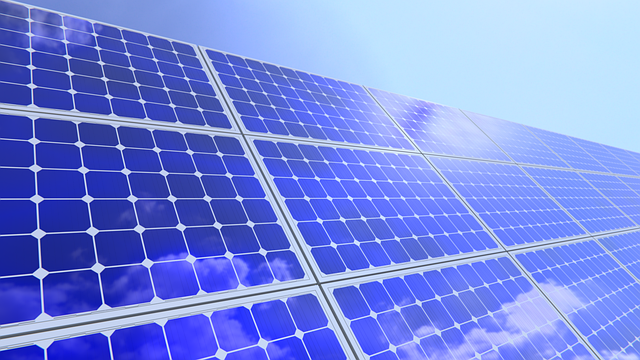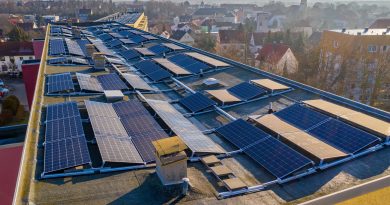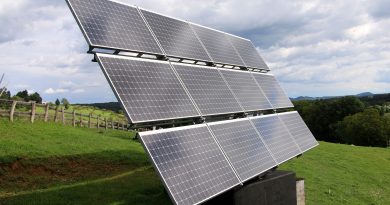Solar Panel Output: Understanding the Numbers
Solar power has been gaining popularity as a renewable source of energy in recent years. As more and more individuals and businesses are turning to solar panels to harness this clean and abundant energy, it becomes crucial to understand the efficiency and output of these panels. In this blog, we will explore what the output of a solar panel is, how it is measured, and what factors affect its performance. By the end, you will have a comprehensive understanding of how solar panels convert sunlight into usable electricity.
What is the Output of a Solar Panel?
The output of a solar panel refers to the amount of electricity it can generate under specific conditions. It is typically measured in watts (W) or kilowatts (kW). The higher the output of a solar panel, the more electricity it can produce.
How is Solar Panel Output Measured?
Solar panel output is measured using key metrics such as peak watt (Wp) and average daily energy production (kWh). Peak watt refers to the maximum power output a solar panel can generate under laboratory conditions, with direct sunlight and an ideal temperature range. On the other hand, average daily energy production measures the amount of electricity generated by a solar panel over an entire day, taking into account factors like sunlight intensity, weather conditions, and temperature variations.
Factors Affecting Solar Panel Output
Several factors can influence the output of a solar panel. Understanding these factors is critical for maximizing the efficiency and performance of your solar power system. Let’s delve into some of the most significant factors:
1. Solar Irradiance
Solar irradiance refers to the amount of sunlight energy reaching a given surface area. Higher solar irradiance means more energy available for a solar panel to convert into electricity. Factors influencing solar irradiance include geographic location, time of year, time of day, and weather conditions.
2. Angle and Direction
The angle and direction at which solar panels are installed play a vital role in their output. Solar panels are typically angled to maximize sunlight absorption. The optimum angle for solar panels varies depending on the latitude of your location. Similarly, the direction (north, south, east, or west) in which solar panels are facing affects the amount of sunlight they receive throughout the day.
3. Temperature
Solar panels perform more efficiently at lower temperatures. As panel temperature rises, their efficiency decreases, resulting in reduced output. The temperature coefficient, a metric provided by solar panel manufacturers, can help estimate the decrease in output as temperatures rise. Designing systems that allow air flow behind the panels can help dissipate heat and improve their overall performance.
4. Shading
Even partial shading on solar panels can significantly impact their output. Shadows from nearby buildings, trees, or other obstructions can cause “hot spots” on the panels, leading to reduced output or even damage. It is crucial to carefully consider potential shading issues when installing solar panels to ensure optimal energy generation.
5. Panel Efficiency
The efficiency of a solar panel represents the percentage of sunlight it can convert into usable electricity. Higher efficiency panels will generate more electricity given the same irradiance and panel size. Technological advancements have resulted in improvements in solar panel efficiency, making them more effective at converting sunlight into electricity.
The Benefits of Understanding Solar Panel Output
Understanding the output of a solar panel is essential for various reasons. Firstly, it helps determine the number of panels required to generate sufficient electricity to meet your needs. By knowing the average daily energy production, you can estimate whether your solar panel system can supply enough power to cover your energy demands.
Secondly, understanding solar panel output allows you to calculate the return on investment (ROI) for your solar power system. By evaluating the system’s output and comparing it to your energy consumption, you can estimate the time it will take to recoup your initial investment.
Lastly, knowing the factors affecting solar panel output allows you to optimize and maintain your solar power system. By considering variables such as angle, direction, shading, and temperature, you can fine-tune your installation and ensure maximum efficiency.
Conclusion
Unlock the numbers behind solar panel output with SolarClue® as your key to understanding. Learn how factors like sunlight intensity, temperature, and shading influence the performance of solar energy systems. Gain insights into ideal conditions for maximum output, optimal placement, angles, and maintenance practices for enhanced energy production. Understand the impact of efficiency ratings on overall output and energy yield. Interpret performance metrics and explore the influence of temperature on solar panel efficiency. Address concerns about weather variability and discover the resilience of solar energy systems in different climates. Estimate energy production with accuracy and stay updated on technological advancements contributing to improved efficiency. Join our community for shared insights and experiences, creating a collaborative platform for continuous learning.
Frequently Asked Questions
SolarClue® assists users in understanding the key variables affecting the performance of solar energy systems, including factors like sunlight intensity, temperature, and shading, influencing the output of solar panels in 2024.
SolarClue® provides insights into the ideal conditions for maximum solar panel output, offering guidance on optimal placement, angles, and maintenance practices to enhance energy production in 2024.
SolarClue® educates users on the concept of solar panel efficiency, detailing how efficiency ratings impact the overall output and energy yield of solar installations in 2024.
SolarClue® guides users in interpreting performance metrics such as the capacity factor, performance ratio, and energy yield, offering a comprehensive understanding of the actual output of their solar panels in 2024.
SolarClue® explains the impact of temperature on solar panel efficiency and output, offering practical tips on managing temperature-related challenges to maintain optimal performance in 2024.
SolarClue® addresses concerns about the variability of solar panel output due to weather conditions, providing insights into the resilience and adaptability of solar energy systems in different climates in 2024.
SolarClue® assists users in estimating the energy production of their solar panels, considering real-world conditions and potential challenges to provide accurate projections for better energy planning in 2024.
SolarClue® provides information on advancements in solar technology contributing to improved panel efficiency and increased energy output, showcasing the latest innovations in the industry in 2024.
SolarClue® guides users in monitoring and analyzing the performance of their solar panels, utilizing smart technologies and tools to optimize energy production and identify potential issues in 2024.
SolarClue® fosters a community where users share insights and experiences related to solar panel output, creating a collaborative platform for continuous learning and knowledge exchange in 2024.




